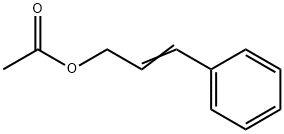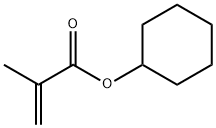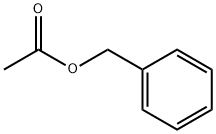Cyclohexyl acetate
- CAS NO.:622-45-7
- Empirical Formula: C8H14O2
- Molecular Weight: 142.2
- MDL number: MFCD00003850
- EINECS: 210-736-6
- SAFETY DATA SHEET (SDS)
- Update Date: 2024-12-18 14:08:52

What is Cyclohexyl acetate?
Chemical properties
Cyclohexyl acetate is a clear colorless to pale yellow, oily, and flammable liquid that has an odor reminiscent of amyl acetate. It is very slightly miscible with water, but completely miscible with common organic solvents. Its solvency properties are comparable to those of amyl acetate. It is used for the production of pigment pastes on account of its good solvency for basic dyes. It is also employed as a fragrance component in the perfume industry.
Occurrence
Reported found in sauerkraut.
The Uses of Cyclohexyl acetate
Cyclohexyl Acetate is a synthetic flavoring agent that is a stable, colorless liquid of fruity odor. it is stored in glass, tin, or resin-lined containers. it is used for flavors such as apple, banana, blackberry, and raspberry with applications in beverages, ice cream, candy, and baked goods at 15–110 ppm.
Preparation
By heating the corresponding alcohol with acetic anhydride or acetic acid in the presence of traces of sulfuric acid.
Production Methods
Cyclohexyl acetate is manufactured by direct esterification of cyclohexanol and alternatively by heating alcohol with acetic anhydride in the presence of sulfuric acid.
Definition
ChEBI: Cyclohexyl acetate is a carboxylic ester.
Taste threshold values
Taste characteristics at 30 ppm: solventy and slightly cooling with sweet banana and apple notes.
Synthesis Reference(s)
Tetrahedron Letters, 3, p. 1287, 1962 DOI: 10.1007/BF01499754
General Description
Cyclohexyl acetate appears as a colorless liquid. Flash point 136°F. Slightly less dense than water and insoluble in water. Vapors are much heavier than air and may be narcotic in high concentrations. May emit acrid smoke and irritating fumes when heated to high temperatures. Used as a solvent and in making rubber.
Air & Water Reactions
Flammable. Insoluble in water.
Reactivity Profile
CYCLOHEXANOL ACETATE is an ester. Esters react with acids to liberate heat along with alcohols and acids. Strong oxidizing acids may cause a vigorous reaction that is sufficiently exothermic to ignite the reaction products. Heat is also generated by the interaction of esters with caustic solutions. Flammable hydrogen is generated by mixing esters with alkali metals and hydrides.
Health Hazard
May be harmful by inhalation, ingestion, or skin absorption. Causes eye and skin irritation.
Fire Hazard
Special Hazards of Combustion Products: Emits toxic fumes under fire conditions. Vapor may travel considerable distance to a source of ignition and flash back.
Safety Profile
Moderately toxic by subcutaneous route. Mildly toxic by ingestion and skin contact. Human systemic effects by inhalation: conjunctiva irritation and unspecified respiratory system changes. A systemic irritant to humans. A skin and eye irritant. Flammable liquid when exposed to heat or flame. When heated to decomposition it emits acrid smoke and irritating fumes.
Solubility in organics
Soluble in alcohol and oils.
Properties of Cyclohexyl acetate
| Melting point: | -77 °C |
| Boiling point: | 172-173 °C(lit.) |
| Density | 0.966 g/mL at 25 °C(lit.) |
| refractive index | n |
| FEMA | 2349 | CYCLOHEXYL ACETATE |
| Flash point: | 136 °F |
| storage temp. | Store below +30°C. |
| solubility | 2g/l |
| form | clear liquid |
| color | Colorless to Almost colorless |
| Odor | at 100.00 %. fruity sweet musty ethereal |
| explosive limit | 0.9%(V) |
| Water Solubility | 1.597g/L(20 ºC) |
| JECFA Number | 1093 |
| Dielectric constant | 5.0800000000000001 |
| CAS DataBase Reference | 622-45-7(CAS DataBase Reference) |
| NIST Chemistry Reference | Acetic acid, cyclohexyl ester(622-45-7) |
| EPA Substance Registry System | Acetic acid, cyclohexyl ester (622-45-7) |
Safety information for Cyclohexyl acetate
| Signal word | Warning |
| Pictogram(s) |
 Flame Flammables GHS02 |
| GHS Hazard Statements |
H226:Flammable liquids |
| Precautionary Statement Codes |
P210:Keep away from heat/sparks/open flames/hot surfaces. — No smoking. P233:Keep container tightly closed. P240:Ground/bond container and receiving equipment. P241:Use explosion-proof electrical/ventilating/lighting/…/equipment. P242:Use only non-sparking tools. P243:Take precautionary measures against static discharge. |
Computed Descriptors for Cyclohexyl acetate
New Products
Tert-butyl bis(2-chloroethyl)carbamate (S)-3-Aminobutanenitrile hydrochloride N-Boc-D-alaninol N-BOC-D/L-ALANINOL 3-Morpholino-1-(4-nitrophenyl)-5,6-dihydropyridin- 2(1H)-one N-octanoyl benzotriazole 3,4-Dibenzyloxybenzaldehyde 1,1’-CARBONYLDIIMIDAZOLE R-2-BENZYLOXY PROPIONIC ACID 1,1’-CARBONYLDI (1,2-4 TRIAZOLE) 4-HYDROXY BENZYL ALCOHOL 3-NITRO-2-METHYL ANILINE (2-Hydroxyphenyl)acetonitrile 4-Bromopyrazole 5-BROMO-2CYANO PYRIDINE 5,6-Dimethoxyindanone 5-broMo-2-chloro-N-cyclopentylpyriMidin-4-aMine 2-(Cyanocyclohexyl)acetic acid 4-methoxy-3,5-dinitropyridine 2-aminopropyl benzoate hydrochloride 1-(4-(aminomethyl)benzyl)urea hydrochloride tert-butyl 4- (ureidomethyl)benzylcarbamate diethyl 2-(2-((tertbutoxycarbonyl)amino) ethyl)malonate Ethyl-2-chloro((4-methoxyphenyl)hydrazono)acetateRelated products of tetrahydrofuran








You may like
-
 Cyclohexyl Acetate CAS 622-45-7View Details
Cyclohexyl Acetate CAS 622-45-7View Details
622-45-7 -
 Cyclohexyl Acetate CASView Details
Cyclohexyl Acetate CASView Details -
 Cyclohexyl acetate CAS 622-45-7View Details
Cyclohexyl acetate CAS 622-45-7View Details
622-45-7 -
 2-ETHYLPYRIDINE 100-71-0 99%View Details
2-ETHYLPYRIDINE 100-71-0 99%View Details
100-71-0 -
 7439-89-6 Electrolytic Iron Flakes 99.9% MaxView Details
7439-89-6 Electrolytic Iron Flakes 99.9% MaxView Details
7439-89-6 -
 7439-89-6 98.0% MinView Details
7439-89-6 98.0% MinView Details
7439-89-6 -
 Reduced Iron Powder 99.8% MaxView Details
Reduced Iron Powder 99.8% MaxView Details
7439-89-6 -
 Electrolytic Iron Powder 7439-89-6 99.8% MaxView Details
Electrolytic Iron Powder 7439-89-6 99.8% MaxView Details
7439-89-6